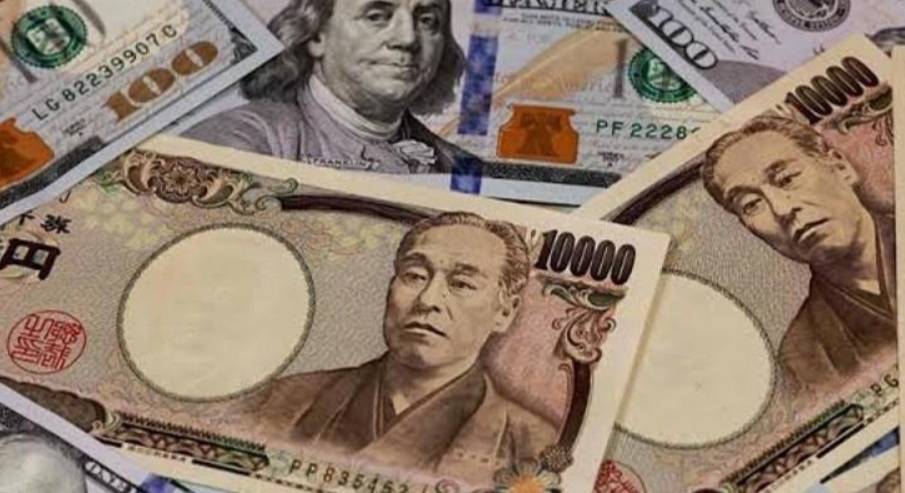Japan's Debt-for-Exchange Deal: Is the Yen's Depreciation Over?
Advertisements
The Bank of Japan recently made a surprising move that sent ripples through the financial markets.On May 13,during their latest policy decision,the central bank reduced its purchase of Japanese government bonds,a decision interpreted as an effort to stabilize the yen amidst ongoing depreciation pressures.This is particularly noteworthy because the action diverges from the Bank's long-held commitment to monetary easing.Following this announcement,Japanese government bonds faced a sell-off with yields rising sharply,indicating a marked change in market sentiments.
Specifically,the Bank cut its purchases in the 5 to 10-year segment from 4.75 trillion yen to 4.25 trillion yen.In reaction,yields climbed dramatically; for instance,the 20-year yield soared to 1.77%—its highest level since 2013.The 30-year bonds also reached levels unseen since 2011,while the key 10-year government bond yield approached 0.96%,just shy of a peak that has been in place for over a decade.Concurrently,the yen registered a 40-point jump against the dollar,heading towards a rate of around 155.49.
Analysts,such as Takahiro Otsuka from Mitsubishi UFJ Morgan Stanley,noted that this unexpected reduction in bond purchases may help to elevate yields and is not unlikely to be a response to the recent downward trend of the yen.The market may now brace itself for increased volatility as investors adjust their strategies.This shift invites speculation regarding the Bank of Japan's future actions,and whether they are indeed pivoting away from their previous course of monetary easing.
Interestingly,reports indicate that the Japanese government may have already intervened in the forex market prior to this announcement,with the fiscal authorities possibly acting on April 29 and May 2 to prevent further depreciation of the yen.Such interventions appeared to stabilize the currency temporarily,as it rallied from a low of 160 to about 152 against the dollar.However,this raises questions about the sustainability of such efforts,given that any long-term efficacy may fundamentally depend on broader global monetary conditions.
Bank of Japan Governor Kazuo Ueda had previously expressed reluctance to interfere in forex matters through monetary policy.However,following a notable one-sided decline in the yen,he commented on May 8 that such a rapid depreciation could be detrimental to the Japanese economy,signaling a potential change in the Bank's stance regarding currency stability.The minutes from the Bank's April meeting showed a growing concern among the monetary committee members regarding the yen's weakness and its implications on inflation.
The urgency for action from the Bank appears to be as critical now as it was in November 2022,with expectations mounting that they may adopt measures to support the yen in the coming June monetary policy meeting.Market reactions have illustrated lingering uncertainty regarding the Bank's trajectory; a sentiment echoed by Katsutoshi Inadome from Sumitomo Mitsui Trust Asset Management,who cautioned that further reductions in purchases could intensify upward pressure on yields.
Despite these recent developments,long-term perspectives on the yen's performance seem to hinge predominantly on the actions of the Federal Reserve,rather than those of the Bank of Japan.Experts from Oxford Economics assert that the yen’s weakness alone is unlikely to trigger significant rate hikes by the Japanese central bank.The risk posed by sustained high yields in the U.S.could prolong the yen's depreciative trend and exacerbate inflation concerns within Japan.
These complexities surrounding currency valuation were further explored by Greg Hirt,Chief Investment Officer at Allianz Investment,who maintains a neutral view on the USD/JPY exchange rate.He cautions against prematurely attributing any fluctuations solely to Bank of Japan interventions, as the prevailing dynamics largely reflect the strength of the Fed's policies in comparison.
as the prevailing dynamics largely reflect the strength of the Fed's policies in comparison.
Historical trends indicate that currency movements are influenced by various macroeconomic factors,including interest rate differentials and inflation.The analysis from Ping An Bank's strategy team suggests short-term interventions may only serve to decelerate the pace of the yen's depreciation rather than instigate a reversal of trend.With major contributing factors being the monetary policy shifts within Japan and the behavior of the U.S.dollar,it is anticipated the yen will maintain a weaker stance for the foreseeable future.
As the situation unfolds,the relationship between the Japanese authorities and the fiscal dynamics with the United States has become increasingly vital.Finance Minister Shunichi Suzuki highlighted the importance of coordinating policies between the government and the Bank of Japan to avoid friction that could impede mutual goals.
Nonetheless,the prospects for joint intervention with the U.S.remain uncertain.On May 13,Treasury Secretary Janet Yellen indicated that while countries could intervene in currency markets,such measures are only as effective as the underlying policy changes that accompany them.This highlights the limited scope for action without broader economic restructuring.
The International Monetary Fund also weighed in,advising Japan that its commitment to allowing the yen to fluctuate freely will assist the Bank of Japan in focusing on price stability.Furthermore,U.S.Bank analysts have warned of significant risks to the global financial framework should cooperative intervention efforts emerge.They stress the potential discord that could arise across U.S.economic policies,particularly in an environment where inflation controls remain uncertain.
These dynamics will certainly keep the markets in a state of vigil as participants navigate the interplay between domestic policy decisions and international economic pressures.The future trajectory of the yen will undoubtedly depend not just on the Bank of Japan's decisions,but also on the prevailing macroeconomic climate shaped by global monetary policies.
Leave a Comment